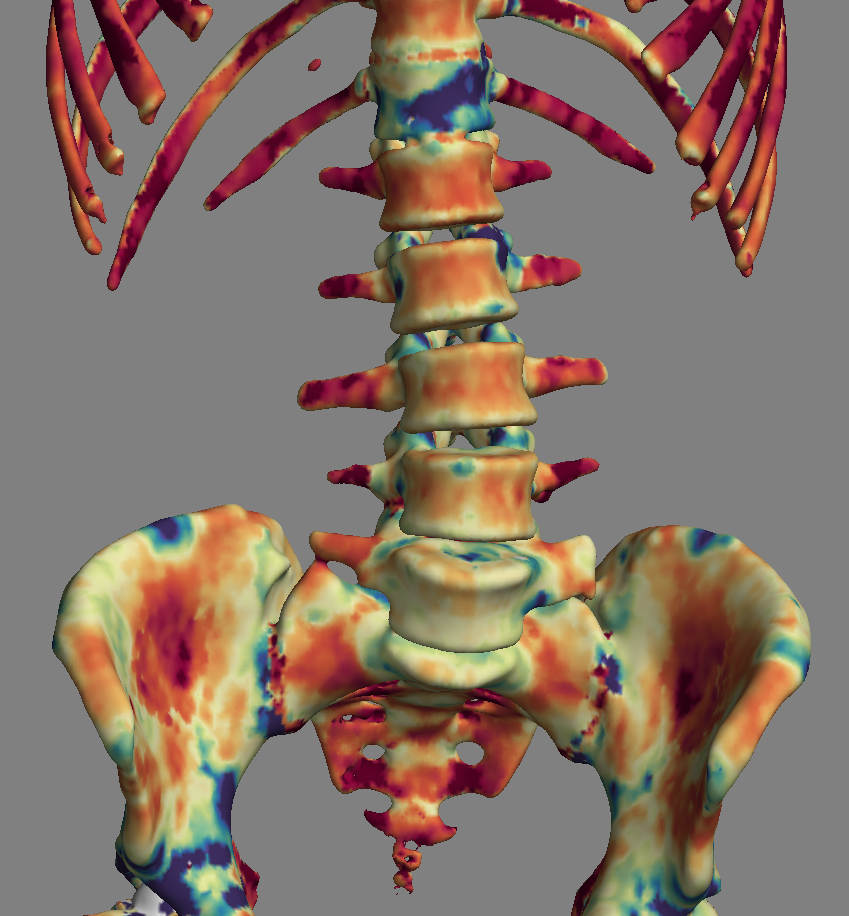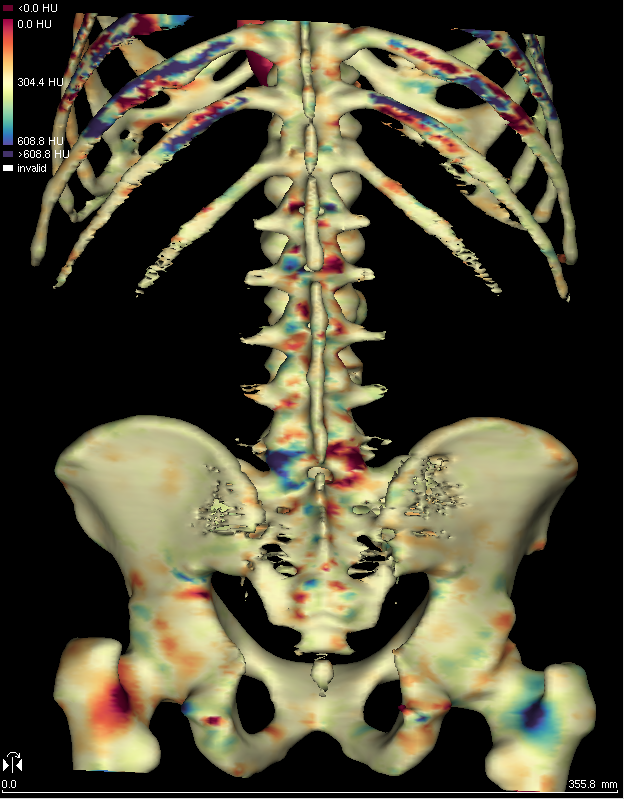Main > GMT_4YP_16_1
Dr Graham Treece, Department of Engineering
F-GMT11-1: Medical imaging and computer graphics: using bone asymmetry to detect disease
 |  |
| There are quite a few diseases which affect bones, for instance osteoporosis or cancer. This picture shows the density of trabecular bone (bone inside the outer denser shell, or cortex). Blue areas are much more dense, and here are mostly due to secondary cancer in for instance a vertebra and parts of the hip. | However, unlike soft tissue (fat, muscles and organs), bone is normally fairly symmetric: so can we automatically highlight potential disease simply by comparing one side with another? Here is an attempt to do that: blue (positive difference) regions always match a red (negative difference) region the other side. This could be a powerful technique for showing the clinician where to look for disease |
| | |
This project particularly concerns the assessment of secondary bone cancers, ie. cancers which can affect the bone after a different primary cancer (often in the prostate). Such cancers are potentially widespread and hence looking for them means analysing imaging data from most of the body. This is typically done using X-ray imaging, but we want to see whether it is possible to use Computed Tomography (CT) data to get a more precise result. In particular, can we take advantage of the normal symmetry of bones and try to automatically highlight areas which are not the same between the left and right sides? This might potentially impact other bone diseases too, for instance osteoporosis.
The project will involve registration, that is positional matching of two different areas, either by first extracting the bone surface and using that, or by using imaging data directly. The idea is to reflect the original data or bone surface and to then try to match one side with another. This is fairly easy for an individual bone, but doing this in an automated way for an entire skeleton will be more difficult. Having performed this registration, the project will then investigate different ways of measuring and displaying any asymmetry in either the bone surface or imaging data.
This is an algorithmic development / computational geometry / software project, so experience of writing software is essential, though the development could also be done using Matlab.
Click here for other medical imaging projects offered by Graham Treece.


